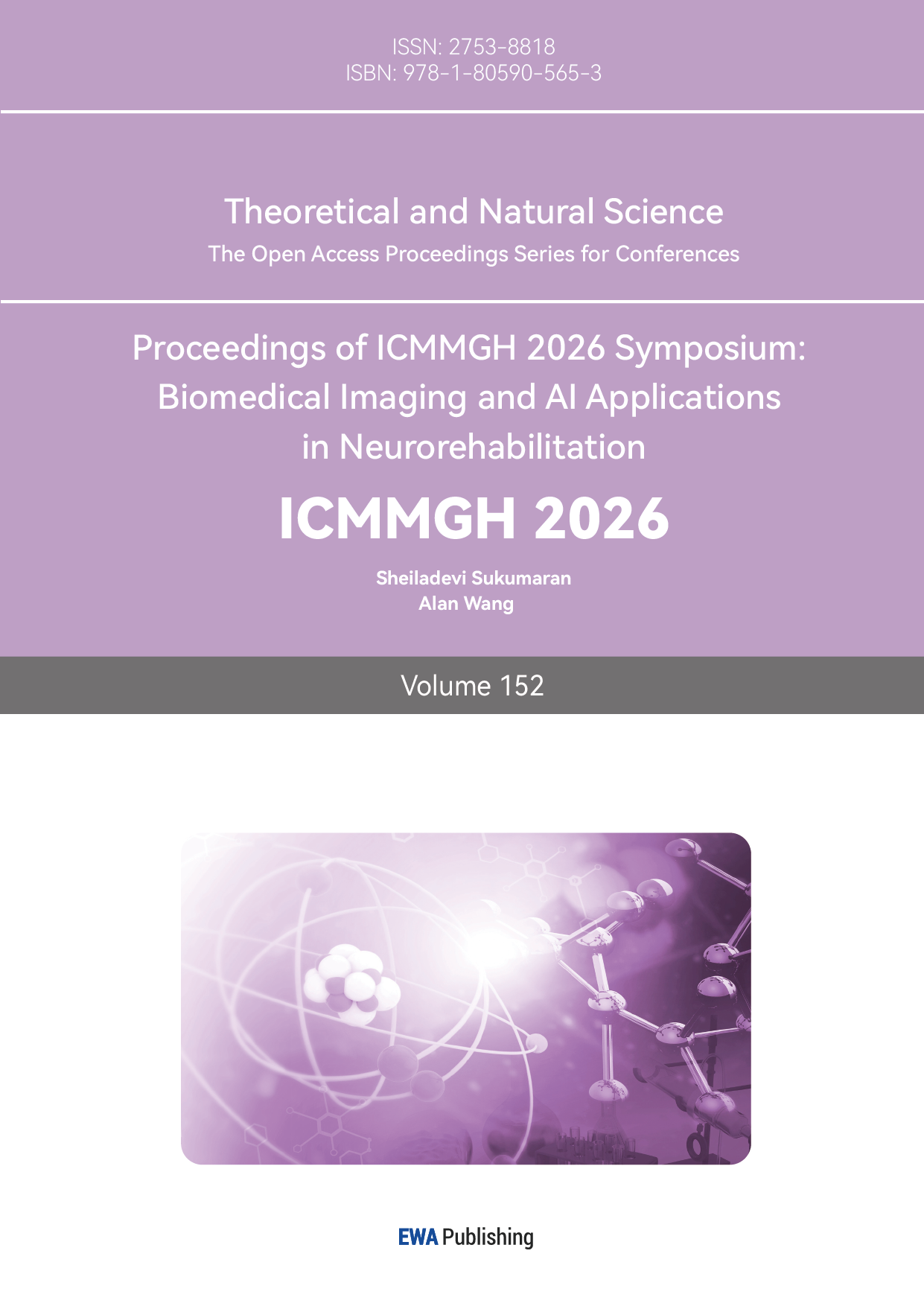References
[1]. Mao, X. G. (2024). Understanding glioblastoma at the single-cell level: Latest progress and future challenges [J]. Chinese Journal of Neurosurgical Disease Research, 18(05), 21.
[2]. Zhao, H. H., Zhang, Z. Y., Yu, X. X., et al. (2025). Progress of single-cell RNA sequencing in cancer research [J]. Journal of Lanzhou University (Medical Sciences), 51(06), 79-86+94. https: //doi.org/10.13885/j.issn.2097-681X.2025.06.011.
[3]. Wang, J., & Su, W. (2022). Development history and research progress of related molecules in glioblastoma [J]. Journal of Practical Medical Techniques, 29(12), 1237-1240. https: //doi.org/10.19522/j.cnki.1671-5098.2022.12.001.
[4]. Sun, Y., Jin, W., Ni, H. B., et al. (2025). Research progress on the molecular mechanism of glucose metabolism in glioblastoma and its targeted therapy [J]. Journal of Clinical Neurosurgery, 22(05), 594-600.
[5]. Tian, L. Y., Cheng, C. D., Qian, Z. R., et al. (2024). Analysis of clinical and molecular pathological features and prognostic factors of primary glioblastoma [J]. Journal of Clinical Neurosurgery, 21(03), 292-297.
[6]. Zhang, H. B. (2024). A study on predicting TERT promoter mutation in glioblastoma based on multi-parameter MRI deep learning [D]. Southern Medical University. https: //doi.org/10.27003/d.cnki.gojyu.2024.000165.
[7]. Wang, G., Zhao, J. J., Nuerbiyaemu·Abulikemu, et al. (2022). Study on the effectiveness of subregional MRI radiomics combined with classification algorithms in predicting MGMT methylation in glioblastoma [J]. Journal of Clinical Radiology, 41(07), 1222-1226. https: //doi.org/10.13437/j.cnki.jcr.2022.07.034.
[8]. Lv, C., Xia, L. F., Chen, Q. S., et al. (2025). Predicting MGMT promoter methylation status in glioblastoma using deep neural network MRI radiomics [J]. Magnetic Resonance Imaging, 16(10), 35-40.
[9]. Li, Q., Dong, F., Jiang, B., et al. (2019). A study on the optimization of glioblastoma EGFR gene amplification classification model based on radiomics [C]// Zhejiang Medical Association, Radiology Branch of Zhejiang Medical Association. Proceedings of the 2019 Academic Congress of Radiology of Zhejiang Medical Association. The Second Affiliated Hospital of Zhejiang University School of Medicine, 2019: 34. https: //doi.org/10.26914/c.cnkihy.2019.101392.
[10]. Ren, L., Wei, Z. L., Qiu, Y. M., et al. (2015). Expression of ID1 in three glioblastoma cell lines and its significance [J]. Journal of Clinical Medicine in Practice, 19(09), 62-64.
[11]. Song, P., Deng, H., & Zhang, M. X. (2024). Application of single-cell RNA sequencing technology in glioblastoma research [J]. Journal of Huazhong University of Science and Technology (Medical Sciences), 53(01), 110-116.
[12]. Deng, H., Guo, W. J., Song, P., et al. (2023). Construction of a prognostic model for glioblastoma based on single-cell sequencing [J]. Biotechnology, 33(01), 38-47. https: //doi.org/10.16519/j.cnki.1004-311x.2023.01.0007.
[13]. Couturier, C.P., Ayyadhury, S., Le, P.U. et al. Single-cell RNA-seq reveals that glioblastoma recapitulates a normal neurodevelopmental hierarchy. Nat Commun 11, 3406 (2020). https: //doi.org/10.1038/s41467-020-17186-5
[14]. Zhang, Y. Z. (2024). A study on differentiating glioblastoma from solitary brain metastases based on radiomics and deep learning [D]. Southern Medical University. https: //doi.org/10.27003/d.cnki.gojyu.2024.000735.
[15]. an, J., Sun, Q., Tan, X., et al. (2023). Imaging-based deep learning identifies glioblastoma risk stratification with genomic and transcriptomic heterogeneity: A multicenter study [J]. International Journal of Medical Radiology, 46(02), 244-245. https: //doi.org/10.19300/j.2023.e0204.
[16]. Zheng, F., & Chen, X. Z. (2022). Research progress of deep learning in glioblastoma [J]. Magnetic Resonance Imaging, 13(03), 115-117.



